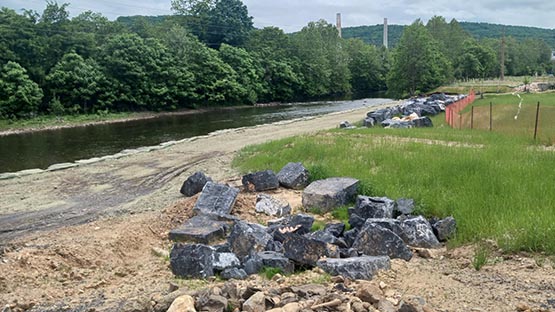The Top Story by Chris Graham
When gasoline was a dollar a gallon, it made sense to pack up the family and head for the hills to escape the higher real-estate prices of the city.
Then it got up to two dollars a gallon. We still liked the suburbs, but it was getting costly to drive back and forth to town.
Now it’s three bucks a gallon – and time for some soul-searching.
“We’re in the throes of that right now,” said Robert Puentes, a fellow in the metropolitan-policy program at the Washington, D.C.,-based Brookings Institution.
“The recent increase in gas prices will have important impacts on household expenditures. The reason for that is that people are starting to realize is that there’s a connection between their housing expenditures and their transportation expenditures,” Puentes told The Augusta Free Press.
Transportation expenditures are second only to housing expenditures, according to Census Bureau data, in the average family’s household budget. And spending on transportation outpaces food and clothing expenses combined.
“If you look at this in terms of housing choices, the typical kinds of surveys that you see from homebuilders and others in the real-estate industry find that if you ask people what counts in a housing choice, transportation and location never really figure prominently. They’re way down at the bottom. People are concerned about the price and the quality of the neighborhood and everything else but transportation,” said Bob Dunphy, a senior resident fellow at the Washington, D.C.,-based Urban Land Institute.
“If prices stay up, though, this could be a much more significant factor in people’s minds and decisionmaking as it relates to not only transportation but also housing choice and job locations – all of the range of activities that we do,” Dunphy told the AFP.
The conventional wisdom is that fuel prices are going to stay close to where they are now for the foreseeable future – unless, that is, they continue to spiral upward, as they have in recent weeks.
“High fuel prices are here to stay. They’ll be up and down, of course. But the long-term trend is going to be up,” said David Goldberg of the Washington, D.C.,-based Smart Growth America.
“You’ve got increasingly intense competition worldwide for a fuel source, petroleum, that if it’s not already peaked is soon to peak – which means that we’ll be on the downside of the supply, and we’ll be having a more difficult time extracting what’s left, even as competition for it is increasing,” Goldberg said.
“I don’t see that there’s potential for substitute fuels to sustain the kind of vehicle travel that we’re used to. I don’t see a real viable replacement coming along anytime soon – in our lifetimes, anyway,” Goldberg told the AFP.
Goldberg agrees with Dunphy and Puentes that high gas prices will change the way we think about where we live.
“There’s the long and slow boiling-the-frog phenomenon of slowly rising gas prices – which gradually will cause people to make decisions over time about what kind of vehicle they buy, and some people will make decisions about locating where they can use transit, or where they don’t have to drive quite as far for their daily needs,” Goldberg said.
“The consciousness is dawning – and this is coming at the same time that we’ve seen real success in the marketplace with alternatives. There are an increasing number of developments being built that are designed to be the kind of places that are high-quality, nice places to live, that are walkable, where you can actually get to shops, offices and take care of your daily needs easily, without spending a long time in your cars,” Goldberg said.
“With the confluence of the rising gas prices and increasing energy vulnerability – with the new and growing market demands – we’re going to see some changes,” Goldberg said.
It’s not just in metro areas like Washington, D.C., Atlanta, Miami and Chicago where this trend is expected to take hold.
“You’re going to need to have patterns that reflect the location of the jobs in Harrisonburg and Staunton and Winchester. People have spread out there just as they have throughout the United States. It’s not something that applies to only metropolitan areas,” said Ed Risse, a Warrenton-based community-planning consultant and author.
“People have moved away from Northern Virginia to places like the Shenandoah Valley to escape the problem, and they have obviously taken their problem with them,” Risse told the AFP.
So … what can this mean for life in the Shenandoah Valley and Central Virginia?
“We’re getting a lot of people over in the Waynesboro area that are commuting from different locations like Charlottesville and Albemarle County. I’m sure it may have some impact on them,” Fred Morgan, the president of the Greater Augusta Association of Realtors, told the AFP.
University of Virginia urban and environmental planning professor William Lucy said that trend, in turn, could lead to more in the way of price pressures on the Charlottesville-Albemarle housing market.
“I saw data recently that in the last five years, assessments on average in the city of Charlottesville have gone up by 70 percent. However, that’s not the average in the areas that are closer to downtown or closer to the university. The assessments close to downtown have doubled or more than doubled in five years – and it’s close to that near the University of Virginia as well,” Lucy said.
“That will be the problem for anyone looking for bargains closer in who may be willing to sacrifice more space inside the house for less space but more convenience. There will be some opportunities in the close-in suburbs and also in the more outer parts of the city. But I would expect that if these prices stay where they are or go higher, the price pressure is going to increase pretty quickly,” Lucy told the AFP.
Kim Sandum, the president of the Harrisonburg-based Community Alliance for Preservation, has noted different kinds of pressures in the Friendly City and surrounding Rockingham County.
“I don’t know if in the short term we’ll see a real significant change in the growth in Rockingham and Harrisonburg – but I have encountered a lot of people recently who it seems have changed their behavior related to gas prices. My own husband, for example, is carpooling – and that’s not something that he’s done before,” Sandum said.
“And then also I seem to keep running into people who are telecommuting – working from home a few days a week and just going into the office whenever necessary. It could be a coincidence – but it does seem interesting to be running into people like that right now,” Sandum said.
“Where it really has the most significant impact in the long term on the transportation projections that VDOT does as standards in their road designs. They do their best to make projections – but they project out for 30, 50 years, and we don’t do things the same now as we did 50 years ago. And I’m pretty sure that we’re going to do things differently 50 years from now. With an engineering background myself, I would be really hesitant to make traffic projections in a straight line out to 2035, for example, like they’re doing for Interstate 81,” Sandum told the AFP.
It took half a century or more for us to complete our flight from the city to the suburbs and from the suburbs to the exurbs. The return to more traditional metropolitan settlement patterns “may take less time than you might think,” Risse said.
“If you look at where the jobs are, and where most of the housing is located, you’ve got a lot of people who are locating and relocating back to the metro areas already,” Risse said.
“If we can look to the future and agree that this is not a blip, and holding a presidential press conference is not going to make it go away, then people will say that we’ve got to make a fundamental change,” Risse said.
(Originally published 05-01-06)










